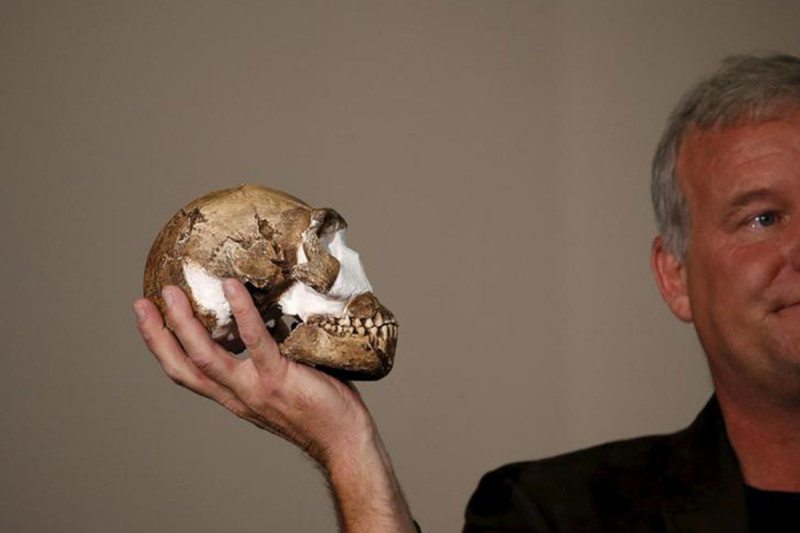The overall pattern of these specimens is unique, with a confusing mix of seemingly primitive and derived traits. The species has several anatomical details also known in early species of our genus, such as Homo habilis and early members of Homo erectus. But it has a much smaller brain size than is typical of these species. In this and several aspects of its teeth, H. naledi resembles species that branched from our family tree much earlier in time, such as 3.2-million-year-old Australopithecus afarensis, the species of the famous “Lucy” fossil skeleton...
In evolutionary biology, such a mixture of features is known as an anatomical mosaic. Paleoanthropologists have learned over the past century that human evolution was not a gradual progression from a very apelike ancestor to modern humans. Our small canine teeth and more upright posture evolved very early in our lineage, our pattern of bipedal walking next. At the midpoint of our evolutionary tree, ancestors and relatives went on a spree of evolving larger molar and premolar teeth—a trend that turned around when the first members of our genus, Homo, started hunting and making stone tools. Only then did they develop the kind of social sharing that led to language, which today characterizes people around the world. The brain evolved late, the legs early, and every species in our ancestry has its own mosaic of features from this legacy.
H. naledi’s mosaic seems to conflict with this storyline. Nowhere is that more evident than at its hand, arm, and shoulder. Tracy Kivell of the University of Kent reported on the combination of a wrist and fingertips more humanlike than those of H. habilis, combined with very curved fingers, comparable to those of both the very earliest hominins and to living apes. Elen Feuerriegel of Australia National University showed a shoulder canted upward on the trunk where it would suit a climbing species, and an upper arm twisted in a way unlike other human relatives. Both match well to the thorax anatomy considered by Scott Williams of New York University, with a narrowed upper rib cage. H. naledi appears to have been a climber and a possible toolmaker, although we have not yet found any stone artifacts in the Dinaledi Chamber.
The legs of H. naledi were long and comparatively slender, with some evidence for an elongation of the lower leg, according to Damiano Marchi of the University of Pisa and Christopher Walker of Duke University. However, Caroline VanSickle of the University of Wisconsin–Madison reported that the hips substantially share an anatomical pattern with the much-shorter-statured Lucy skeleton. Zach Throckmorton of Lincoln Memorial University took on the task of building this mixture of features into an overall picture of H. naledi’s gait, noting the evidence for a more humanlike foot.
The overall picture given by the results presented at the April symposium is that H. naledi walked more or less like humans do, seems to have had hands well made for handling and manipulating objects, and had teeth that indicate a high-quality diet—all things that link the species to our genus. Yet, it had a trunk, hips, shoulders, and fingers that contrast with that picture, and it had a brain similar in size to those of some of the earliest branches of the hominin lineage. In many ways H. naledi was adapted like a human, without anything like a human brain...







 Reply With Quote
Reply With Quote



























